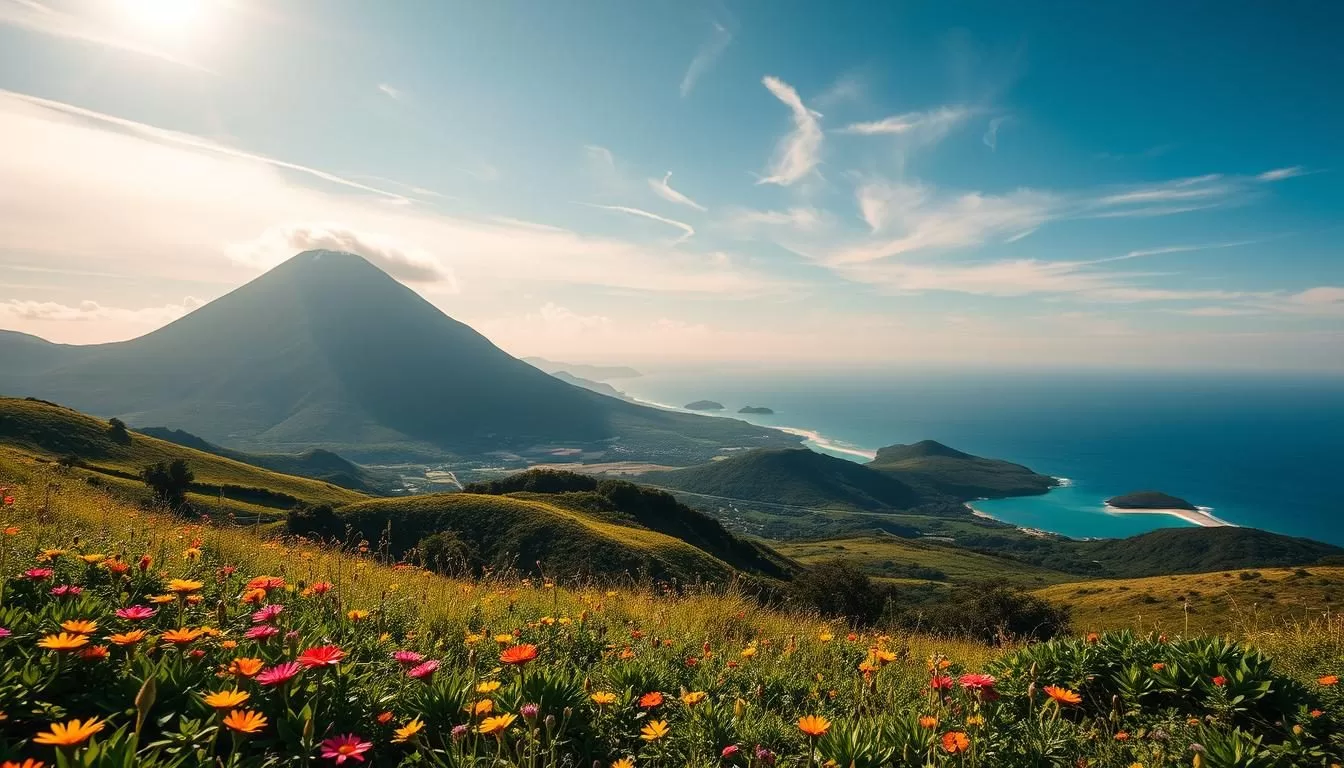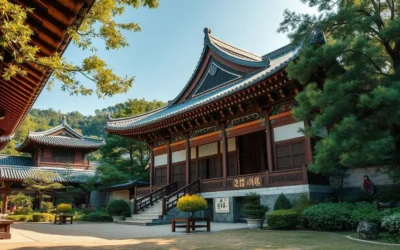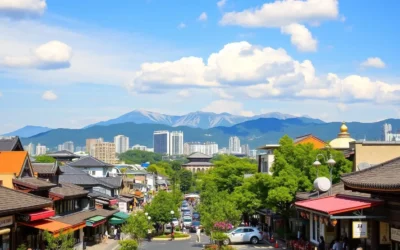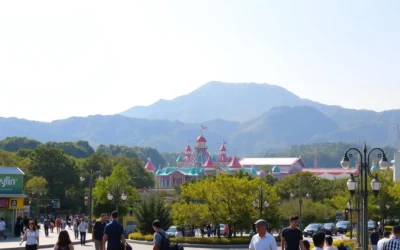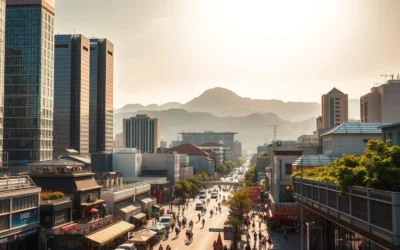✓ Accommodations✓ Flights✓ Rental Cars✓ Tours & Activities
Imagine an island that combines breathtaking natural beauty with rich cultural heritage. Jeju Island, a UNESCO World Heritage Site, is just an hour’s flight from Seoul, making it an ideal getaway.
This tropical paradise, often referred to as the “Hawaii of Korea,” boasts stunning volcanic landscapes, pristine beaches, and beautiful waterfalls. With its unique blend of natural wonders and cultural charm, Jeju Island attracts millions of visitors every year.
Whether you’re planning a short trip or a longer stay, Jeju Island has something for everyone. From hiking volcanic craters to relaxing on beautiful beaches, you can experience a mix of adventure, relaxation, and cultural immersion.
Discovering the Natural Beauty of Jeju Island
As you step onto Jeju Island, you’re immediately enveloped in a world of natural beauty and wonder. This enchanting island, located off the southern coast of South Korea, is a treasure trove of unique landscapes and diverse ecosystems.
The Volcanic Origins of Jeju
Jeju Island is a product of volcanic activity, with its formation dating back thousands of years. This volcanic origin has endowed the island with a unique landscape, featuring craters, lava tubes, and a majestic mountain that dominates the skyline. The island’s volcanic heritage is not just a geological curiosity but a living, breathing part of its identity, shaping the soil, the climate, and even the culture of Jeju.
UNESCO World Heritage Sites
Jeju Island boasts several UNESCO World Heritage Sites, a testament to its natural and cultural significance. These include Hallasan Mountain, Seongsan Ilchulbong (Sunrise Peak), and the Manjanggul Lava Tube. Each of these sites offers a unique glimpse into the island’s geological history and biodiversity.
| UNESCO Site | Description | Key Features |
|---|---|---|
| Hallasan Mountain | Korea’s highest peak, showcasing diverse ecosystems. | Temperate rainforests, alpine flora. |
| Seongsan Ilchulbong | A volcanic crater formed by a hydrovolcanic eruption. | Panoramic views, unique geological formations. |
| Manjanggul Lava Tube | One of the world’s longest lava tubes. | Lava stalactites, underground landscapes. |
Visiting these sites is a must for anyone traveling to Jeju Island. They not only provide a guide to the island’s natural wonders but also offer a range of activities, from hiking to exploring the unique geological formations. As you explore Jeju, you’ll discover that it’s not just a place to visit, but an experience that stays with you.
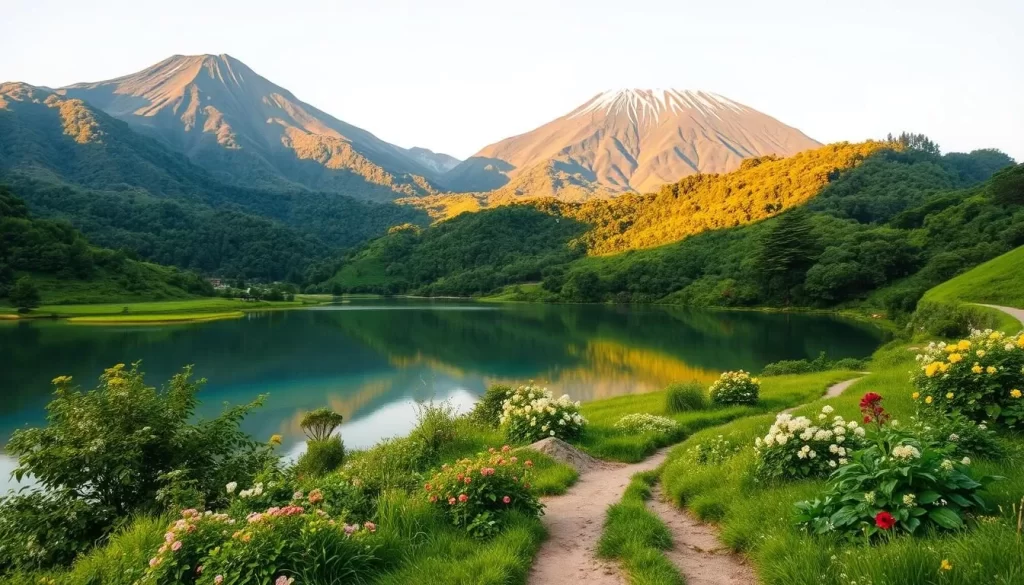
When to Visit Jeju Island
To make the most of your visit to Jeju Island, it’s crucial to know when to go. The island’s climate varies significantly throughout the year, impacting your experience whether you’re planning to enjoy the beach, go hiking, or explore other attractions.
Seasonal Highlights
Jeju Island’s seasons offer diverse experiences. Spring and fall are ideal for hiking and outdoor activities due to their mild temperatures. Summer is hot and humid, with temperatures reaching up to 30°C (86°F), making it perfect for beach activities. Winters are mild but can be windy, especially in coastal areas. Here’s a quick rundown of what to expect:
- Spring: Mild temperatures, ideal for hiking and outdoor activities.
- Summer: Hot and humid, perfect for beach activities but beware of typhoons.
- Autumn: Comfortable temperatures, great for hiking and exploring.
- Winter: Mild but windy, good for those who prefer cooler weather.
Weather Considerations
Understanding Jeju’s weather is crucial for a smooth trip. The island experiences a monsoon season from June to August, which can impact outdoor plans. Additionally, typhoons can occur from July to September. Elevation changes on the island create microclimates, with Hallasan Mountain often experiencing different weather than coastal areas. For water activities like snorkeling or diving, the clarity can vary with weather conditions. Here are some tips to keep in mind:
- Pack accordingly based on the season you visit.
- Check weather forecasts regularly, especially during typhoon season.
- Be prepared for sudden weather changes.

Exploring Jeju’s Volcanic Wonders
From towering mountains to vast lava tubes, Jeju’s volcanic features are a marvel to explore. The island’s unique volcanic landscape offers a diverse range of experiences for visitors.
Hallasan Mountain: Korea’s Highest Peak
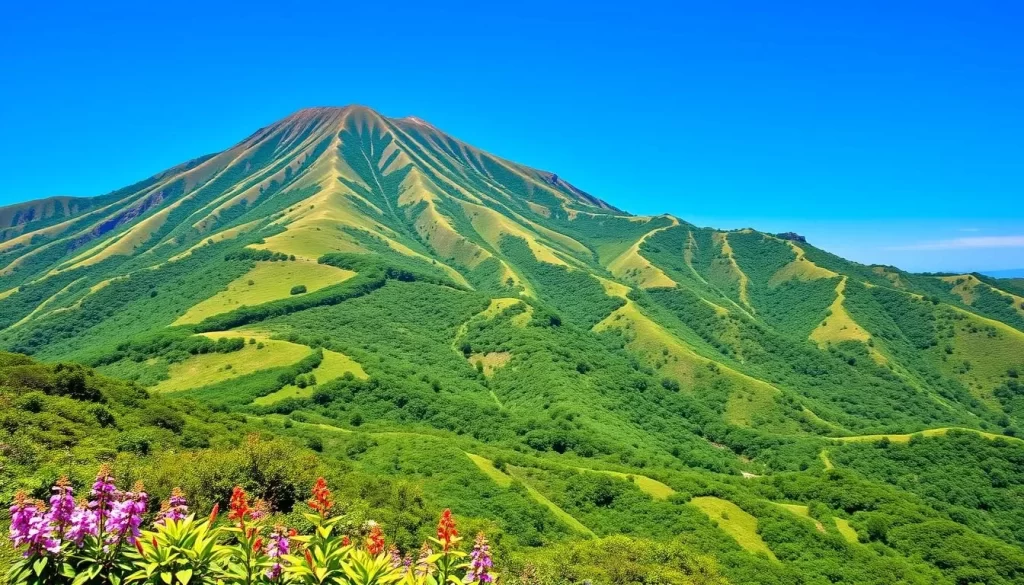
Hallasan Mountain, standing at 1,950 meters, is not only Jeju’s but also South Korea’s highest peak. Hiking Hallasan Mountain is a popular activity, with several trails that cater to different skill levels. The climb is rewarding, offering breathtaking views of the island and insights into its geological history.
The mountain is part of Hallasan National Park, which is known for its diverse flora and fauna. The climb can be challenging, but the panoramic views from the summit make it a must-experience for any visitor to Jeju.
Seongsan Ilchulbong (Sunrise Peak)
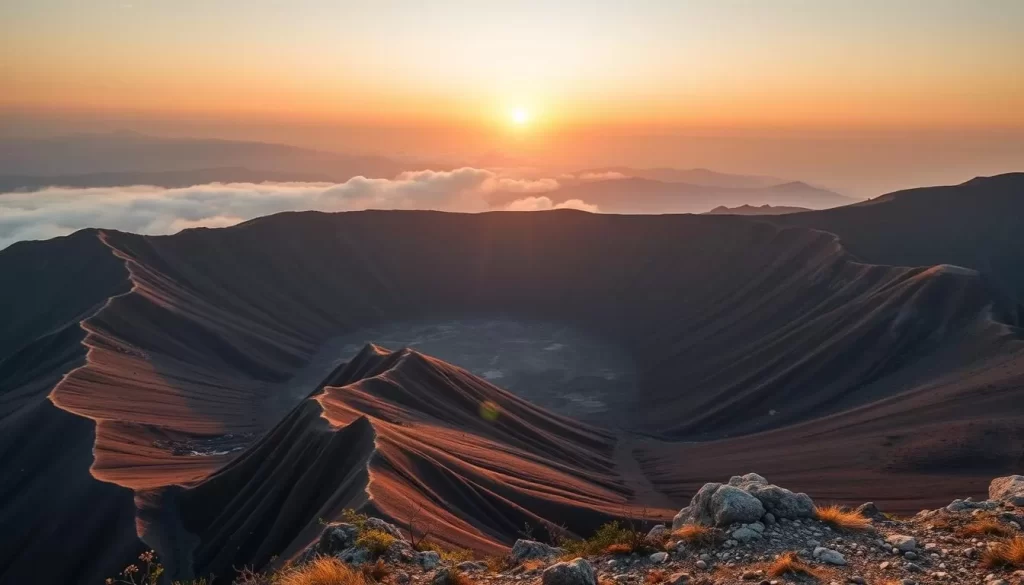
Seongsan Ilchulbong, or Sunrise Peak, is a volcanic crater that has become one of Jeju’s most iconic landmarks. Formed by a hydrovolcanic eruption, it offers stunning views of the surrounding landscape and the sea. Visitors can walk along the crater’s rim and enjoy the unique scenery.
This site is not only a testament to Jeju’s volcanic past but also a great spot for watching the sunrise, hence its name. The experience of standing on the crater’s edge at dawn is truly unforgettable.
Manjanggul Lava Tube
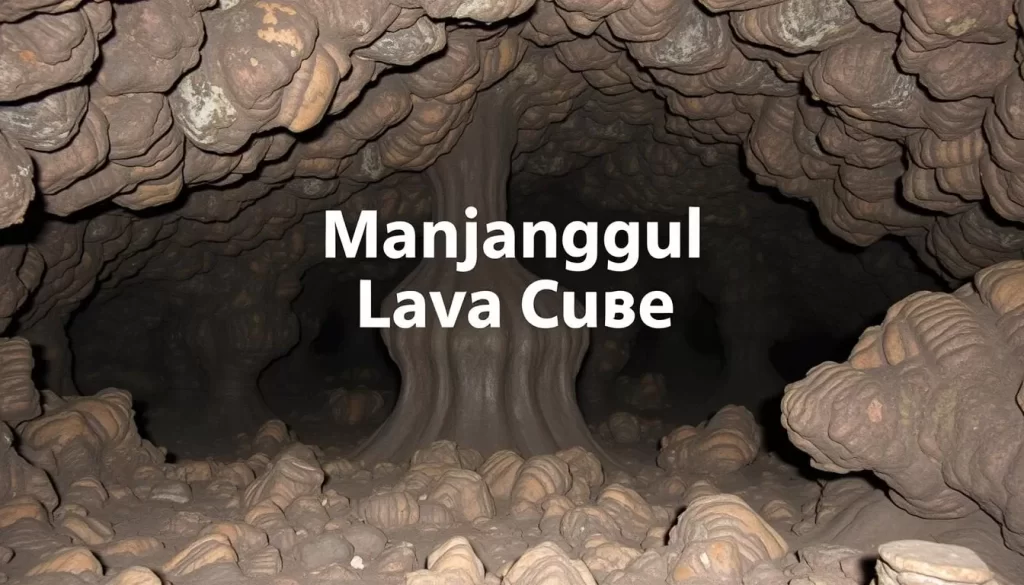
The Manjanggul Lava Tube is one of the longest lava tubes in the world, stretching 7.5 kilometers. While only one kilometer is open to visitors, it’s an experience not to be missed. Inside, you’ll find impressive lava formations, including the famous “Stone Turtle,” which resembles Jeju Island’s shape.
Visitors can explore this natural wonder, learning about its formation and the unique ecosystem within. The constant temperature of 11-12°C inside the cave makes it a cool retreat from the island’s warmer climate. This is definitely one of the top things to do in Jeju, offering a glimpse into the island’s volcanic history through its manjanggul lava formations.
Chasing Waterfalls in Jeju
As you explore Jeju Island, you’ll discover a series of breathtaking waterfalls that showcase the island’s natural beauty. The island is home to numerous waterfalls, each with its unique charm and character.
Jeongbang Waterfall: Where Water Meets the Sea
Jeongbang Waterfall is one of the most iconic waterfalls on Jeju Island, cascading directly into the ocean. This unique waterfall is a must-visit attraction, offering breathtaking views and a tranquil atmosphere.
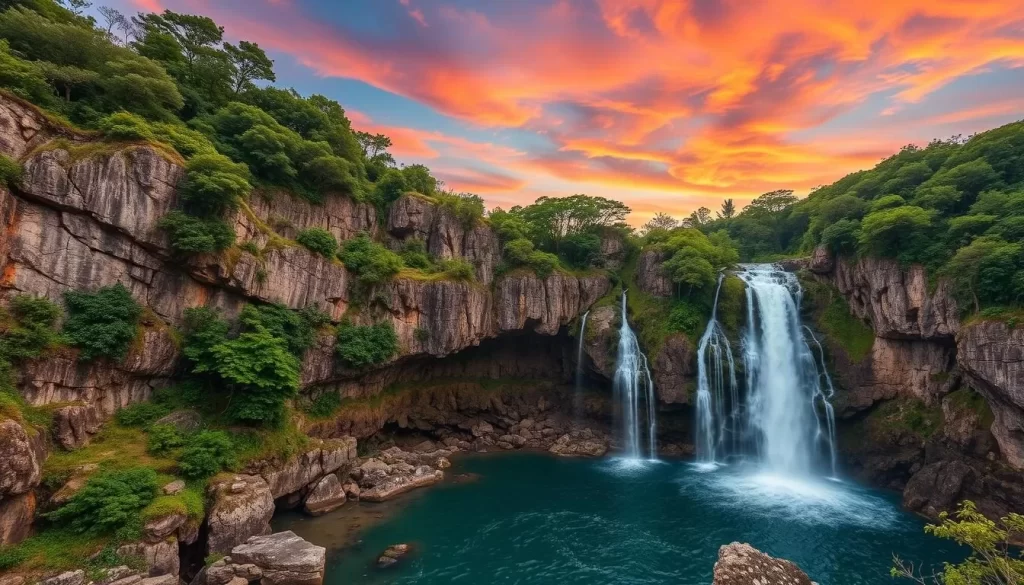
Cheonjiyeon Waterfall and Its Legends
The name “Cheonjiyeon” translates to “where the sky meets the land” or “God’s pond,” reflecting the waterfall’s ethereal beauty. This 22-meter cascade flows into a deep blue artificial pond, surrounded by lush greenery and subtropical vegetation.
According to local legends, seven nymphs descended from heaven to bathe in the waters of Cheonjiyeon Waterfall. The waterfall’s unique rock formations and wider cascade distinguish it from other waterfalls on the island.
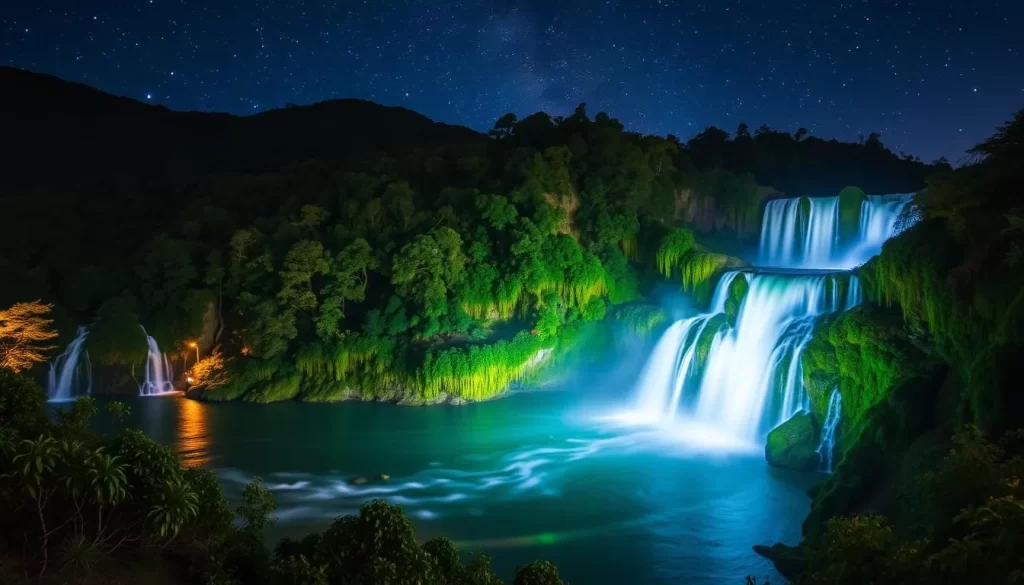
Visitors can enjoy a peaceful stroll around the waterfall, taking in the serene atmosphere and marveling at the rare plants and fish species found in and around the waterfall. The illuminated nighttime viewing experience transforms the waterfall into a magical setting, making it a must-visit attraction on Jeju Island.
Jeju’s Stunning Beaches
Jeju’s stunning beaches, with their crystal-clear waters and pristine sands, are a highlight of any trip to the island. The island boasts a variety of beaches, each with its unique charm and attractions. From the popular and family-friendly shores to the secluded and serene coves, Jeju’s beaches cater to all tastes and preferences.
Hyeopjae Beach: Turquoise Waters and White Sand
Hyeopjae Beach is one of Jeju’s most beautiful beaches, known for its turquoise waters and white sand. This beach is perfect for those looking to relax and enjoy the sun, sea, and sand.
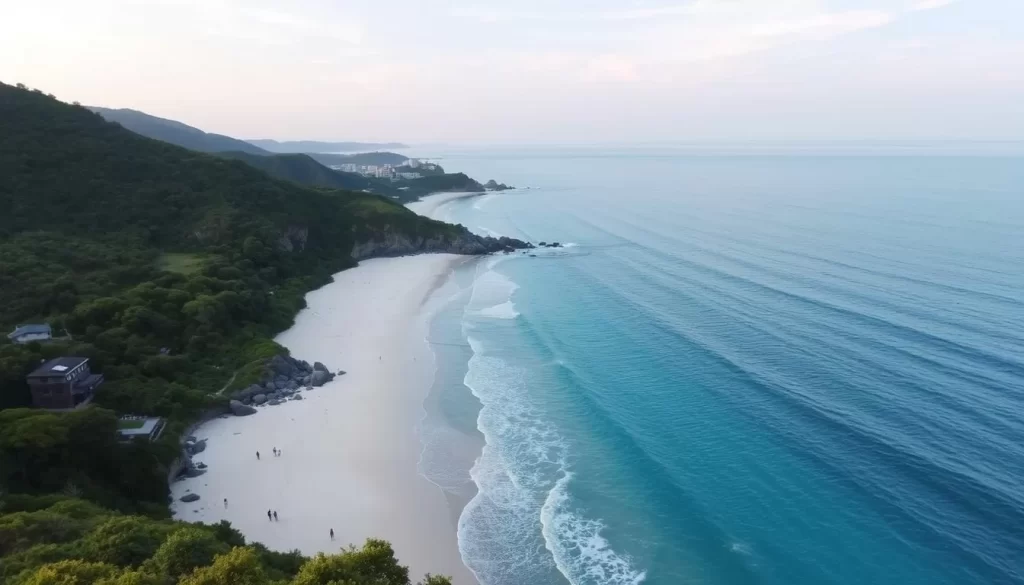
Hamdeok Beach: Family-Friendly Shores
Hamdeok Beach is a favorite among families due to its gentle waves and shallow waters, making it an ideal spot for children. The beach is also lined with restaurants and cafes, offering a convenient day out.
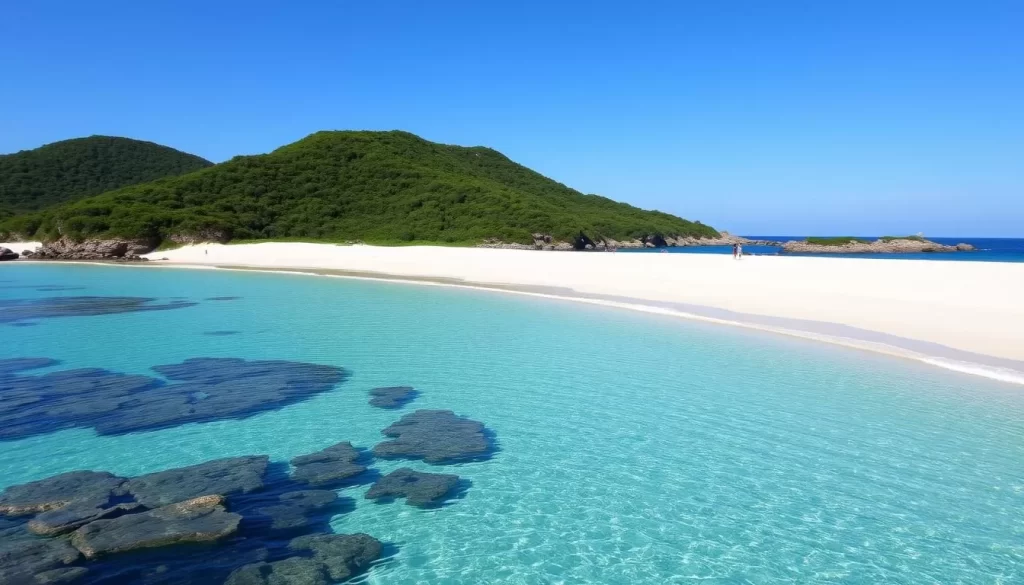
Gimnyeong Beach: Off the Beaten Path
Gimnyeong Beach offers a more authentic and less crowded experience. The beach is known for its fine white sand and clear waters, perfect for wading and gentle swimming. You can also explore the nearby Gimnyeong Maze Park for a full day of activities.
Whether you’re looking for a lively atmosphere or a peaceful retreat, Jeju’s beaches have something for everyone. The unique coastal ecosystems, cultural differences in beach usage, and local fishing culture add to the richness of the experience.
Hiking Adventures on Jeju Island
With its unique volcanic landscape, Jeju Island provides a fascinating hiking experience. The island is home to numerous trails that cater to different skill levels, offering breathtaking views and an opportunity to explore its natural wonders.
The Scenic Jeju Olle Trail
The Jeju Olle Trail is a renowned hiking route that spans the island, offering a comprehensive way to experience Jeju’s diverse landscapes. This trail is divided into several sections, allowing hikers to choose their preferred route and duration. As you hike along the Jeju Olle Trail, you’ll be treated to stunning coastal views, lush countryside, and charming villages.
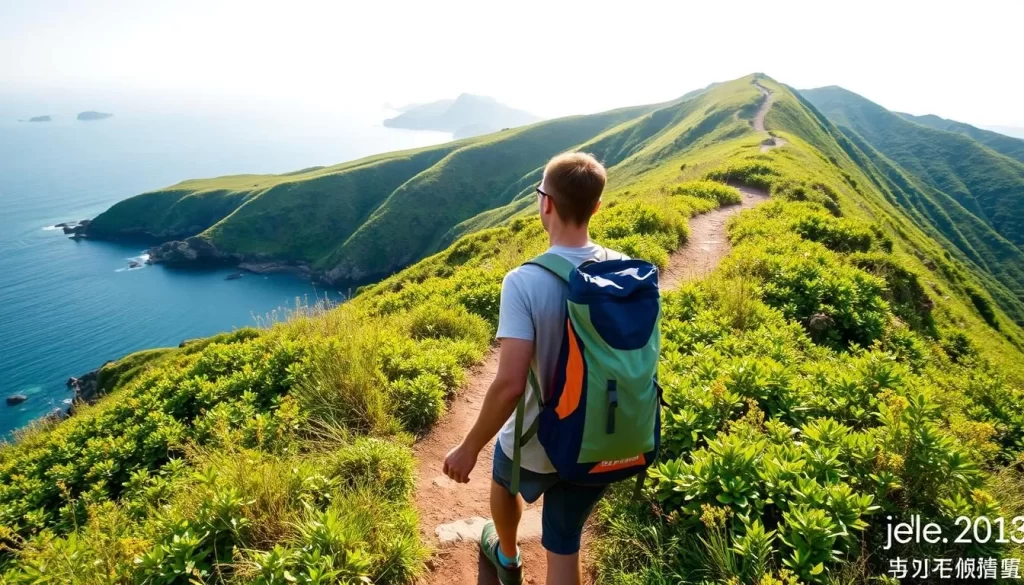
Eoseungsaengak Trail: A Short But Rewarding Hike
The Eoseungsaengak trail is an ideal introductory hike for visitors to Jeju, offering spectacular views without requiring a full-day commitment. This short, steep trail leads to the summit of Eoseungsaengak, a parasitic volcanic cone with 360-degree panoramic views of the island’s rolling hills. On a clear day, you can even spot Hallasan, Jeju’s highest peak, in the distance.
- Discover the perfect introductory hike for visitors to Jeju who want spectacular views without dedicating an entire day to trekking.
- Learn about this short but sweet trail that leads to the summit of Eoseungsaengak, a parasitic volcanic cone offering 360-degree panoramic views.
- Understand why this hike is ideal for families, casual hikers, or those with limited time, taking only about 30-40 minutes round trip.
- Explore the unique volcanic landscape you’ll encounter on this trail, including the distinctive oreum (parasitic cone) formation that’s characteristic of Jeju.
- Get practical information about the trail, including the stairway section, the best times to visit for optimal views, and nearby facilities.
- Learn about the cultural and geological significance of this site and how it fits into Jeju’s broader volcanic landscape.
- Discover photography tips for capturing the stunning vistas from the summit, including Hallasan Mountain in the distance on clear days.
Cultural Experiences in Jeju Province, South Korea: Best Things to Do – Top Picks
Discover the unique cultural identity of Jeju Island through its people, traditions, and crafts. Jeju Province is not just about natural beauty; it’s also a hub of rich cultural heritage waiting to be explored.
Meeting the Haenyeo: Jeju’s Female Divers
The Haenyeo, or female divers of Jeju, are a symbol of the island’s cultural resilience and uniqueness. These women dive into the ocean without breathing apparatus, collecting seafood and seaweed. Their tradition dates back centuries, and it’s a testament to the strong, independent spirit of Jeju’s women.
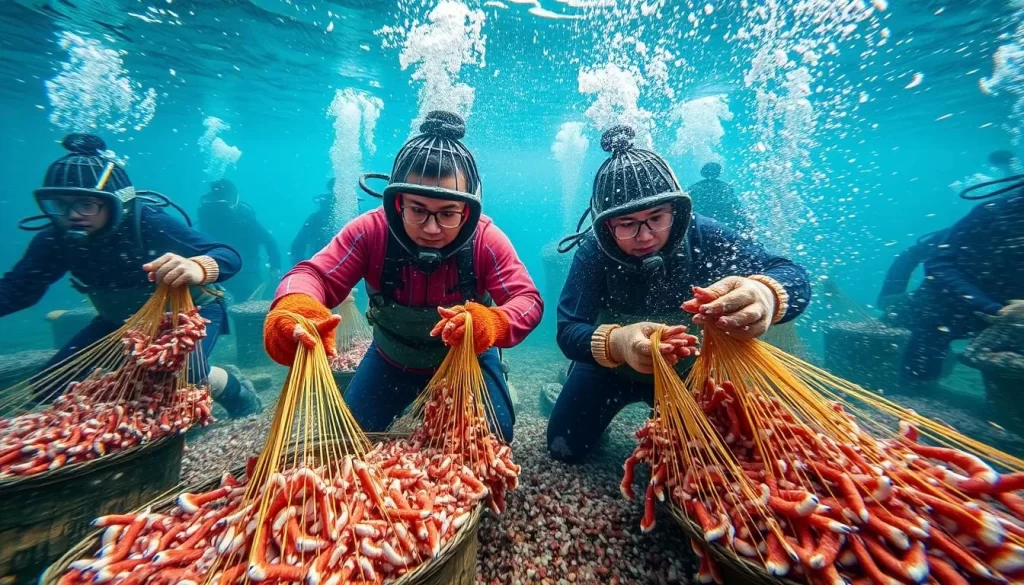
Seongeup Folk Village: Step Back in Time
Seongeup Folk Village is a living museum that preserves the traditional way of life on Jeju Island. As you walk through the village, you’ll see traditional houses, folk museums, and artisans at work. It’s an opportunity to step back in time and experience Jeju’s cultural heritage firsthand.
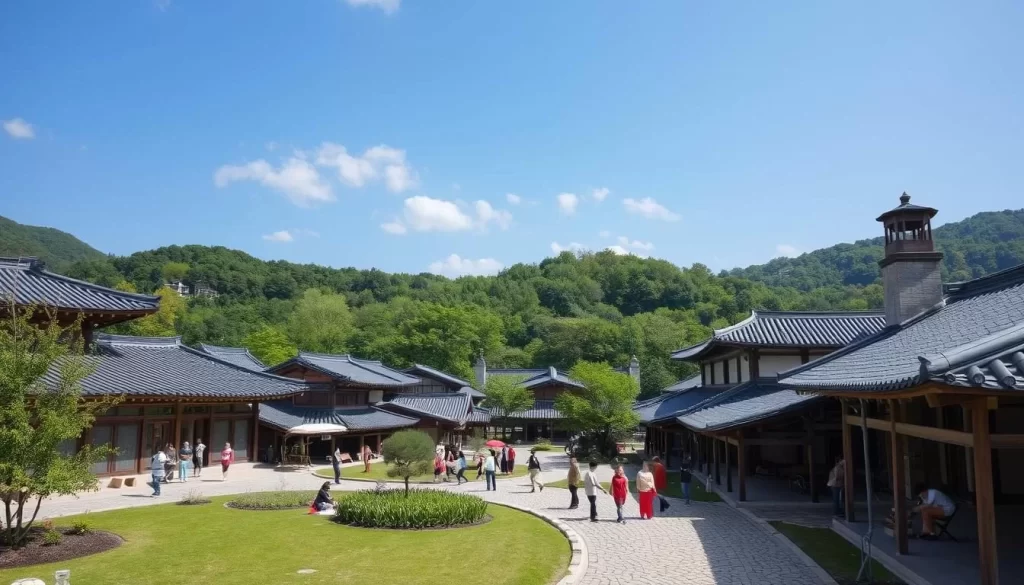
Traditional Crafts and Workshops
Jeju Island is renowned for its traditional crafts, including rattan weaving, stone carving, and natural dyeing techniques. Visitors can participate in hands-on workshops where they can learn these crafts under the guidance of skilled artisans. For instance, at Haruae Jeju, you can learn the art of rattan crafts and create your own souvenirs.
- Discover the rich tradition of craftsmanship on Jeju Island through hands-on workshops.
- Learn about traditional Jeju crafts, including haenyeo diving tools and rattan weaving.
- Explore opportunities to make your own crafts under the guidance of skilled artisans.

These cultural experiences not only enrich your travel experience but also provide a deeper understanding of Jeju’s unique culture and traditions. By engaging with the local community and participating in traditional crafts, you create meaningful memories of your trip.
Gardens and Parks Worth Visiting
Experience the tranquility of Jeju’s gardens and parks, a perfect antidote to the hustle and bustle of city life. Jeju Island is renowned for its natural beauty, and its gardens and parks are no exception. These serene spaces offer a unique experience that combines nature, art, and tranquility.
Camellia Hill: A Flower Lover’s Paradise
Camellia Hill is a must-visit destination for flower enthusiasts. This beautiful garden features a vast collection of camellias and other flowers, set amidst lush greenery. The garden is a perfect place to unwind and appreciate the beauty of nature.
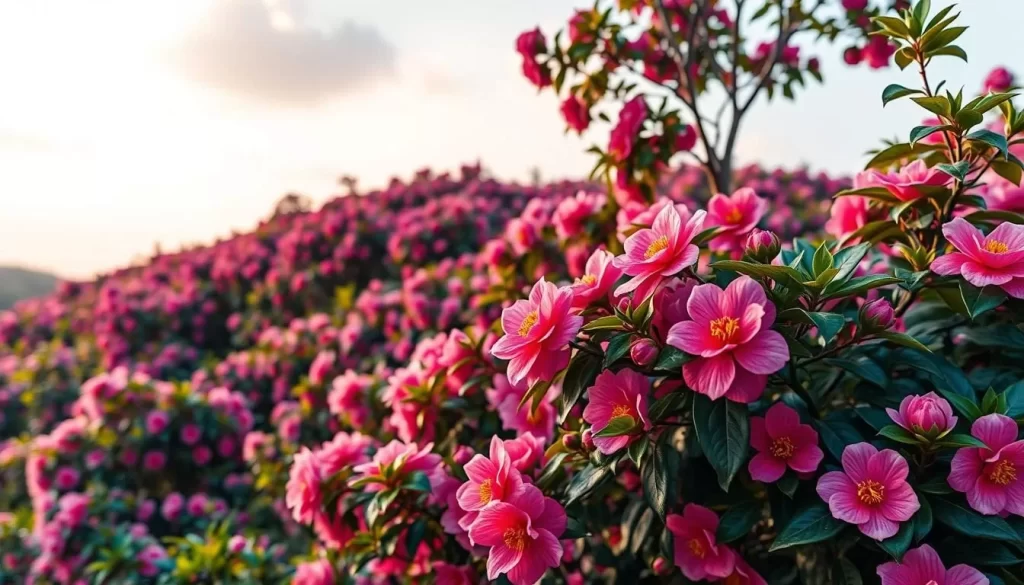
Spirited Garden: Bonsai and Tranquility
The Spirited Garden, also known as Bunjae Artpia, is a haven for bonsai enthusiasts. With hundreds of bonsai trees, some over 300 years old, this garden is a testament to the art of bonsai cultivation. The garden’s design, which incorporates volcanic and water themes, creates a serene atmosphere that invites contemplation and relaxation.
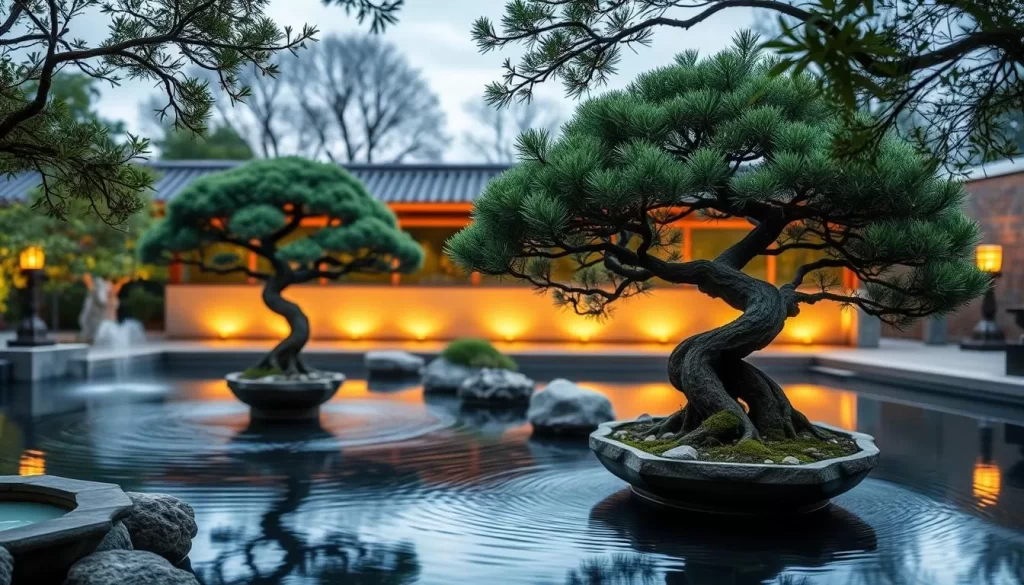
Unique Museums and Attractions
Among Jeju’s many charms are its unique museums and attractions, each offering a distinct perspective on the island’s history, culture, and environment. You’re looking for things to do that are a little off the beaten path? Jeju’s got you covered with its top museums.
Jeju Stone Park: Volcanic Heritage
Jeju Stone Park is a fascinating outdoor museum that showcases the island’s volcanic heritage through an extensive collection of stones and rock formations. As you explore the park, you’ll gain insight into the geological history that shaped Jeju into the beautiful island it is today.
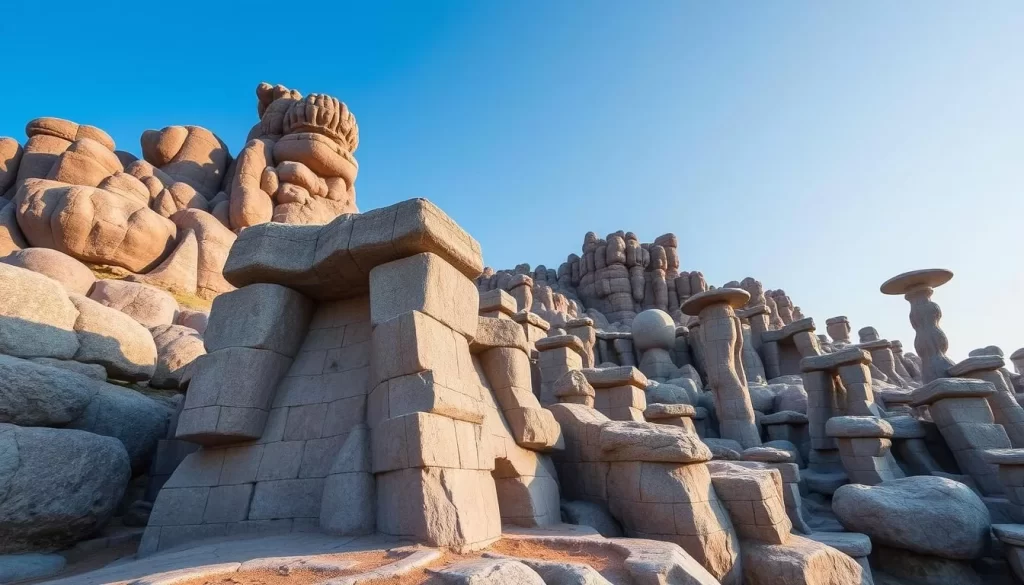
O’Sulloc Tea Museum and Plantation
The O’Sulloc Tea Museum offers a serene experience where you can learn about the art of tea-making and the history of tea cultivation on Jeju Island. The museum is surrounded by a beautiful tea plantation, making it a perfect spot to relax and enjoy the natural scenery.
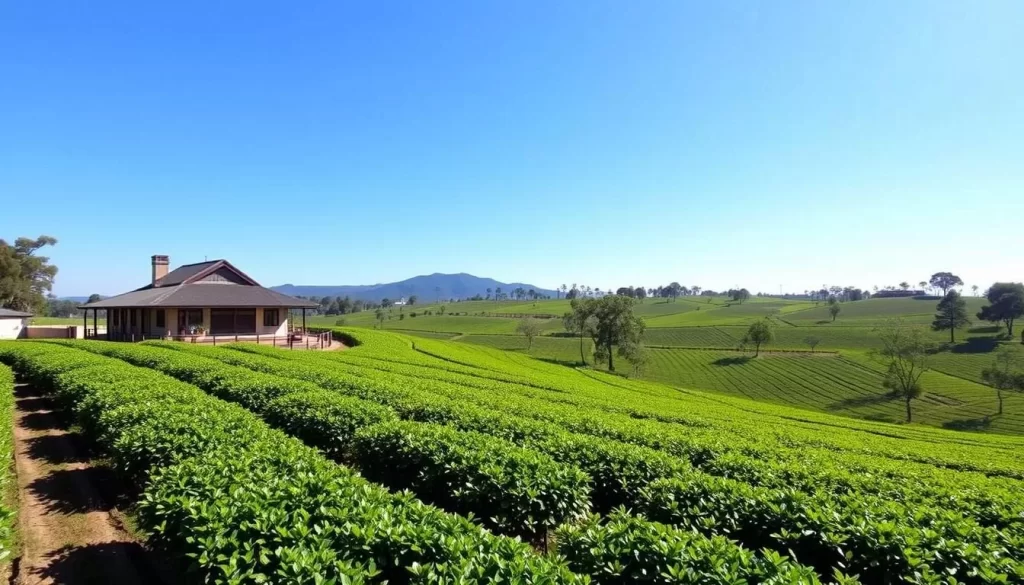
Jeju Arte Museum: Digital Art Experience
For a dose of modern culture, visit the Jeju Arte Museum, which features immersive digital art installations that blend technology with artistic expression. This museum is one of the top attractions for those interested in contemporary art and interactive experiences.

These unique museums and attractions not only enrich your understanding of Jeju’s culture and history but also provide memorable experiences. Whether you’re interested in nature, art, or culture, Jeju has something special to offer.
Island Hopping from Jeju
For those looking to venture beyond Jeju Island, there are several nearby islands that offer unforgettable experiences. Island hopping from Jeju is a great way to explore more of what the region has to offer.
Udo Island: A Day Trip Paradise
Udo Island, also known as U Island, is a popular day-trip destination from Jeju. This small island is rich in natural beauty, with scenic coastlines and lush interiors. Visitors can enjoy various activities, including beach relaxation and hiking.
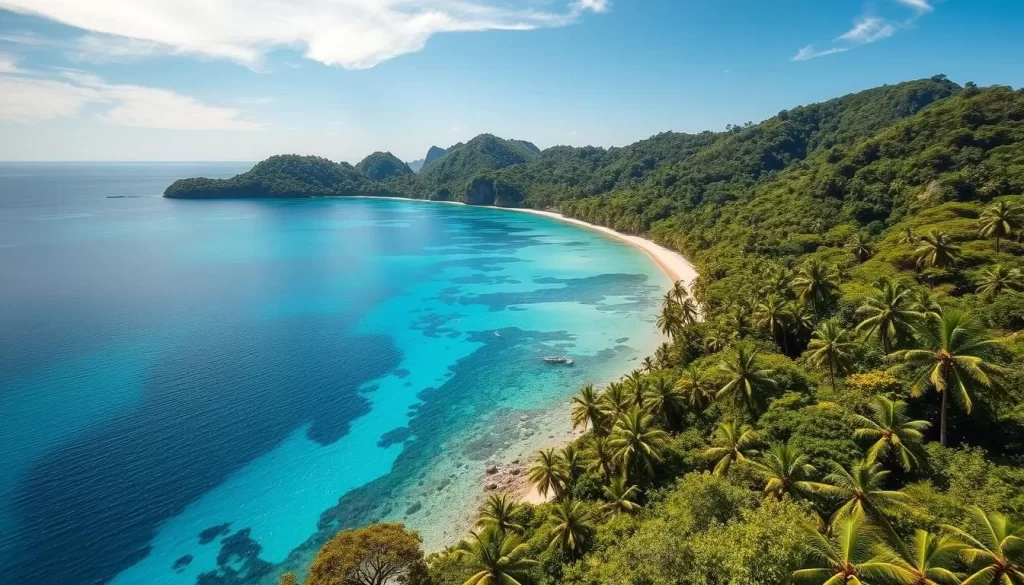
Exploring Munseom Island
Munseom Island is renowned for its exceptional scuba diving opportunities. As a Marine Conservation Area, it’s home to a diverse range of marine life, including over 250 species of fish and more than 120 types of seaweed. Whether you’re a certified diver or just starting out, Munseom Island is a must-visit destination for any diving enthusiast.
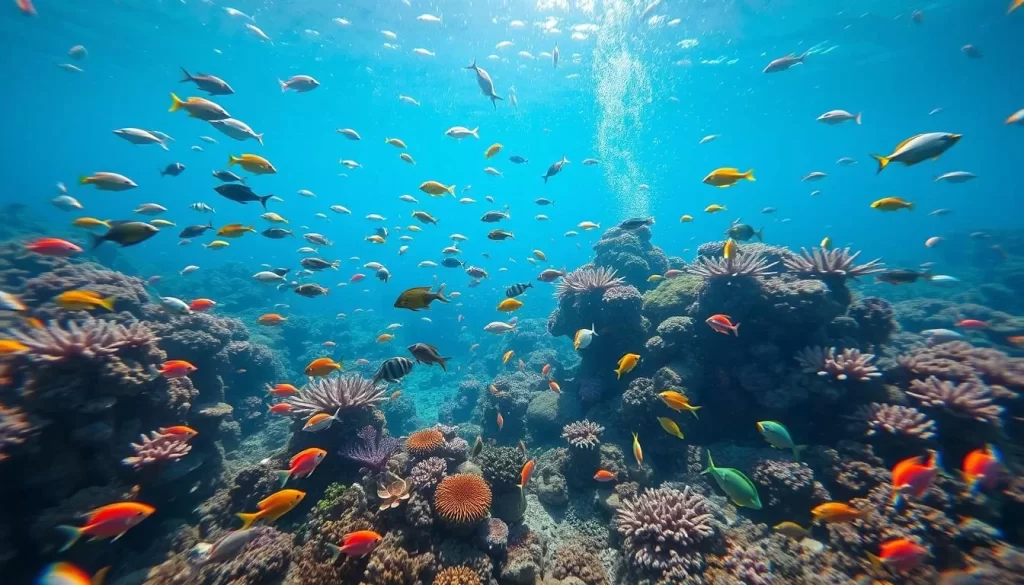
In conclusion, island hopping from Jeju offers a unique chance to explore the surrounding waters and discover hidden gems like Udo and Munseom Islands. Each island provides a distinct experience, from relaxation to adventure, making Jeju a perfect base for your island-hopping adventure.
Culinary Delights of Jeju
From fresh seafood to unique local produce, Jeju Island’s culinary delights are sure to tantalize your taste buds and leave you wanting more. The island’s cuisine is deeply influenced by its natural environment and cultural heritage.
Must-Try Local Specialties
When visiting Jeju, there are several local specialties you shouldn’t miss. Fresh seafood is a staple, with the island’s waters providing an abundance of delicious fish and shellfish. Be sure to try some of the local black pork, known for its tender texture and rich flavor. Other must-try dishes include Jeju-style bibimbap and haemul pajeon, a seafood pancake that’s perfect for sharing.
Dongmun Market: A Food Lover’s Haven
Dongmun Market is a bustling marketplace where you can sample a wide variety of Jeju’s culinary delights. From fresh produce to street food, this market offers a truly immersive culinary experience. Be sure to try some of the local street food, such as grilled squid or hotteok, a sweet pancake-like dessert.

Jeju’s Famous Tangerines
Jeju Island is renowned for its tangerines, known locally as hallabong or gamgyul. These citrus fruits are prized for their sweet flavor and juiciness, and are grown in the island’s unique volcanic soil. You can enjoy Jeju tangerines fresh during the harvest season, or in various products throughout the year, from juices and teas to chocolates and beauty products.
Practical Travel Tips for Jeju Island
Practical travel tips can make or break your Jeju Island experience, ensuring a smooth and enjoyable trip. To have a hassle-free travel experience, it’s crucial to be prepared with the right information.
Getting Around: Car Rental and Navigation
Renting a car is one of the best ways to explore Jeju Island, offering flexibility and convenience. For navigation, Google Maps isn’t effective here; instead, use Naver Map or Kakao Map for real-time directions.

Accommodation Options
Jeju offers a wide range of options for accommodation, from luxury hotels to cozy guesthouses. Choosing the right place to stay depends on your travel plans and preferences.

Essential Apps and Services
Several apps can enhance your Jeju trip. For transportation, Kakao T is a reliable alternative to Uber. For staying connected, consider pocket WiFi rentals or local SIM cards.
- Discover essential mobile apps like Naver Map and Kakao Map for navigation.
- Learn about transportation apps like Kakao T.
- Explore translation apps like Papago for overcoming language barriers.
- Understand your options for staying connected, including pocket WiFi and eSIM services.
By being prepared with the right tips and tools, you can fully enjoy your Jeju Island adventure.
Creating the Perfect Jeju Itinerary
With so much to see and do on Jeju Island, a well-planned itinerary is your key to an unforgettable adventure. Whether you’re looking to explore the island’s natural beauty, experience its unique culture, or simply relax on its stunning beaches, a thoughtful approach to travel planning is essential.
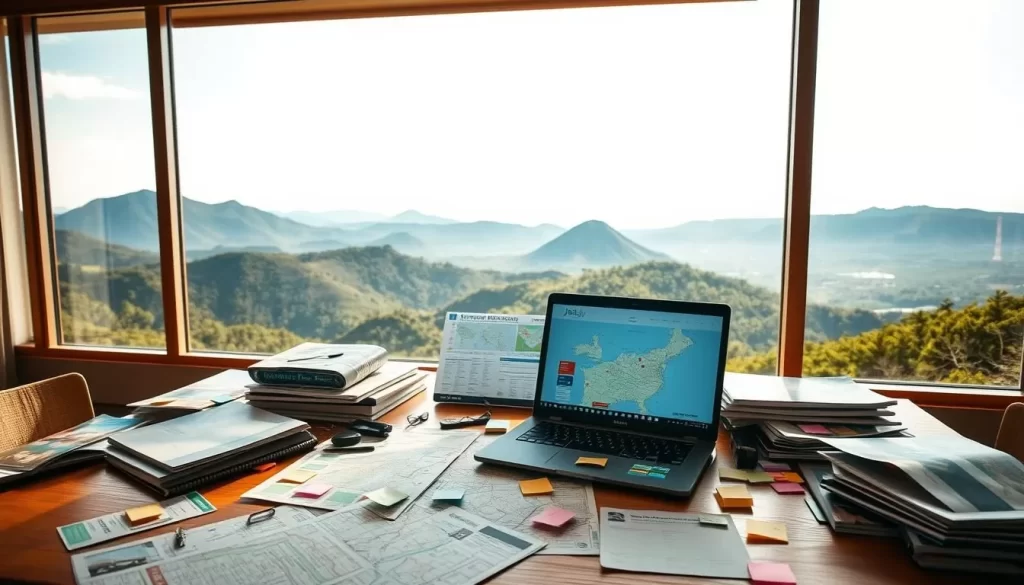
3-Day Itinerary Highlights
For those with limited time, a 3-day itinerary can provide a taste of Jeju’s diverse attractions. Start with exploring the island’s volcanic origins by visiting Hallasan Mountain, Korea’s highest peak, and then head to Seongsan Ilchulbong, a UNESCO World Heritage Site. On your second day, enjoy the island’s beautiful beaches, such as Hyeopjae Beach, known for its turquoise waters and white sand. Your third day can be spent experiencing Jeju’s culture by visiting the Seongeup Folk Village and meeting the Haenyeo, Jeju’s female divers.
Week-Long Adventure Suggestions
A full week on Jeju Island allows for a more comprehensive exploration, combining popular highlights with off-the-beaten-path discoveries. You can circle the island, experiencing different regions while minimizing backtracking. Incorporate more challenging hiking activities like the full Hallasan Mountain hike and longer sections of the Jeju Olle Trail. Balance your active days with relaxation time, including visits to secluded beaches and wellness experiences like Jeju’s famous outdoor hot springs. With a longer stay, you can also explore nearby islands like Udo and enjoy deeper cultural immersion through cooking classes and interactions with local communities.
By planning your trip during the optimal season, typically from April to June, you can enjoy mild temperatures and fewer crowds, making your activities even more enjoyable. This careful planning will ensure that your Jeju Island adventure is memorable for all the right reasons, making you a true island lovers.
Conclusion
With its unique blend of volcanic landscapes, pristine beaches, and rich cultural heritage, Jeju Island is a destination that promises unforgettable memories. As you explore this beautiful island in South Korea, you’ll discover a world where adventure, culture, and natural beauty blend seamlessly.
The incredible diversity of experiences on Jeju Island is truly astounding, from the breathtaking views of its volcanic wonders and serene beaches to its rich cultural traditions and culinary delights. Whether you’re seeking adventure, relaxation, cultural immersion, or gastronomic exploration, Jeju Island has something for everyone.
To make the most of your visit, consider planning ahead by renting a car for easy navigation and booking day tours to streamline your experience. Don’t miss iconic spots like the lava tubes and coastal walks, which offer stunning views and unique things to do. As you explore, remember to respect and preserve the natural environment and support local communities, including the renowned Haenyeo diving culture.
Each season on Jeju Island offers a different perspective on its beauty and attractions, making it a year-round destination. Whether you’re hiking scenic trails, exploring volcanic sites, or simply enjoying the local cuisine, your experience on Jeju Island will be filled with unforgettable moments.
As you plan your trip, we encourage you to embrace the spirit of adventure and discovery that Jeju Island embodies. With its unique blend of natural beauty, culture, and adventure, Jeju Island is sure to leave you with memories that will last a lifetime.
The above is subject to change.
Check back often to TRAVEL.COM for the latest travel tips and deals.
